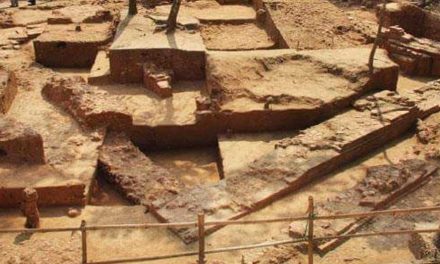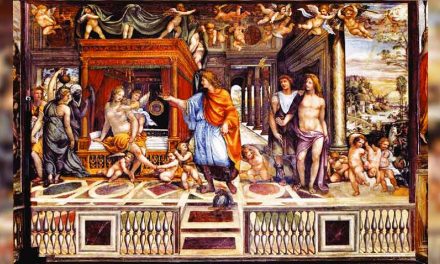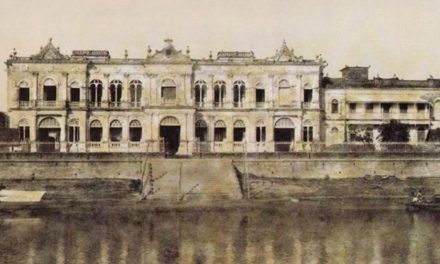
ছোটবেলায় স্কুলের ইতিহাসে নালন্দা মহাবিহারের কথা আমরা সবাই পড়েছি । কিভাবে পঞ্চম শতকের শুরুতে স্থাপিত এই বৌদ্ধশাস্ত্রের চর্চার মহান বিদ্যাপীঠের পঠন-পাঠনের সমাপ্তি ঘটল, এই প্রশ্নের উত্তরে, বোধহয় প্রায় সবাই বলবেন, “নালন্দা মুসলিম আক্রমণকারী বখতিয়ার খলজি ধ্বংস করেছিল।” এই ধারণাটা যে কতটা ব্যাপক, তার উদাহরণ পাই ঐতিহাসিক সতীশ চন্দ্রের রচনায়:১
“A Khalji officer, Bakhtiyar Khalji, whose uncle had fought the battle of Tarain, had been appointed in charge of some of the areas beyond Banaras. He had taken advantage of this to make frequent raids into Bihar, which was at that time in the nature of a no-man’s land. During these raids, he had attacked and destroyed some of the famous Buddhist monasteries o Bihar, Nalanda and Vikramasila, which had no protector left.”
কিন্তু সত্যিই কি তাই?
এ বিষয়ে কোন সন্দেহ নেই, ১১৯৮-১১৯৯ সালে আফগান সেনাপাতি ইখতিয়ার-উদ-দীন মুহম্মদ (অর্থাৎ, বখতিয়ার খলজি)এবং তার সেনারা বর্তমান বিহার রাজ্যের কোন একটি বৌদ্ধ বিহারকে দূর্গ ভেবে ধ্বংস করেছিল। ১২৫৯ সালে, মিনহাজ-ই-সিরাজ জুর্জানি, তাঁর ‘তবকাত-ই-নাসিরী’ গ্রন্থের বিংশতিতম খণ্ডে এই ধবংসলীলার বর্ণনা দিয়েছেন:২
“It is said by the credible persons that he went to the gate of the fort of Behār with only two hundred horses, and began the war by taking the enemy unawares… Muhammad Bakhtiyār with great vigour and audacity rushed in at the gate of the fort and gained possession of the place. Most of the inhabitants of the place were Brāhmans with shaven heads. They were put to death. Large numbers of books were found there and when the Muhammadans saw them, they called for some persons to explain their contents, but all the men had been killed. It was discovered that the whole fort and city was a place of study (madrasa). In the Hindī language the word Behār (vihār) means a college.”
মিনহাজের এই বর্ণনা থেকে অবশ্য ঠিক কোন বৌদ্ধ বিহার ধ্বংস করা হয়েছিল তা চিহ্নিত করা সম্ভব নয় (যদিও মিনহাজ তাঁর গ্রন্থের ঠিক পূর্ববর্তী খণ্ডে ‘ঔদন্দ’ জয়ের কথা উল্লেখ করেছেন)। কিন্তু, ১৬০৮ সালে লামা তারনাথ, তাঁর ‘rGya-gar-chos-‘byuṅ’ (ভারতে বৌদ্ধধর্মের ইতিহাস) গ্রন্থে পরিষ্কারভাবে জানিয়েছেন এই বিহার হল ওদন্তপুরী (বর্তমান বিহার শরীফ) :৩
“Then came the Turuṣka king called the Moon to the region of Antarvedi in-between the Gaṅgā and the Yamunā. Some of the monks acted as the messengers for this king. As a result, the petty Turuṣka rulers of Bhaṃgala and other places united, ran over whole of Magadha and massacred many ordained monks in Odantapurī. They destroyed this and also Vikramaśīla. The Persians at last built a fort on the ruins of the Odanta- vihāra.”
তারনাথের বর্ণনা অনুযায়ী প্রথমে ওদন্তপুরী ও তারপর বিক্রমশীল মহাবিহার ধ্বংস হয়। নালন্দার কোন উল্লেখ তারনাথ করেন নি। এত স্পষ্ট বক্তব্য সত্ত্বেও কিন্তু সংশয় দূর হয় নি। সতীশ চন্দ্রের মতো ঐতিহাসিক হাসমুখ ধীরজলাল সাঙ্কলিয়াও মনে করতেন বখতিয়ার খলজিই নালন্দা ধ্বংস করে। সাঙ্কলিয়া অবশ্য মিনহাজের বর্ণিত ১১৯৯ সালে বখতিয়ার খলজির দ্বারা ধ্বংস করা বৌদ্ধ বিহারকে তারনাথের সাক্ষ্যের ভিত্তিতে ওদন্তপুরী বলে মেনে নিয়েছেন। তিনি এটাও স্বীকার করে নিয়েছেন বখতিয়ার খলজির ১১৯৯ সালে নালন্দা ধ্বংস করার কোন প্রত্যক্ষ প্রমাণ নেই। তা সত্ত্বেও, তিনি প্রথমে অনুমান ও তারপর সরাসরি সিদ্ধান্তে উপনীত হয়েছেন, বখতিয়ার খলজিই ১২০৫ সালে নালন্দাও ধ্বংস করেছিল। যেহেতু, সাঙ্কলিয়ার বিশ্বাস ছিল নালন্দার সমাপ্তি মুসলিম আক্রমণের ফল, তাই বোধহয় কোন ঐতিহাসিক সাক্ষ্য-প্রমাণ ছাড়া শুধুমাত্র অনুমানের ভিত্তিতে এই সিদ্ধান্তে পৌঁছেছিলেন:৪
“Needless to say, the description of the so called fort of Bihar refers to the capture and destruction of a Buddhist monastery. Now this has been identified with the monastery of Odanatapuri, founded by Rāmapāla, on the strength of remarks of Taranath…It would thus appear that there is no direct evidence to Nālandā was destroyed by the Mohammedans in the year A.D. 1199. We, however, think that the description of the loot and ravage of the monastery referred to by the Moslem chronicler as well apply to Nālandā. The reasons for this suggestion are as under: 1. Nālandā like Vikramaśilā and Odanatapuri, had, as we learn from Hiuen Tsiang, a big surrounding wall, which would give it the appearance of a fortress. 2. It had also a rich library containing countless books. 3. Moreover, its antiquity and huge establishment were sufficient reasons for the invader to regard it as very prosperous and therefore a good bait for attack. Likewise, we would suggest the year A.D. 1205-1206, as the probable date of the Vihāra’s destruction…Kutubuddin thus seems to have had the Sultanate in or about 1205 A.D.; and as Bakhtiyar Khilji was honoured by Kutubuddin as A Sultan, the invasion, therefore, of Bihar approximately took place in or about 1205 or 1206 A.D. Hence, Nālandā was destroyed by the Mohammedans in or about 1205 A.D…The Moslem invasion therefore appears to be the immediate cause of the destruction of Nālandā.”

নালন্দা মহাবিহারের খনিত ধ্বংসাবশেষ।
ঐতিহাসিক কালিকা রঞ্জন কানুনগোর অবশ্য বখতিয়ার খলজি কোন বিহার ধ্বংস করেছে এ ব্যাপারে কোন সংশয় ছিল না । তিনি লিখেছেন:৫
“The fortified monastery which Bakhtyār captured probably in 1199 A.D. was known as Audand-Bihār or Odaṇḍapura-Vihāra.”
ঐতিহাসিক রমেশচন্দ্র মজুমদারও প্রায় একই কথাই লিখেছেন:৬
“Within a short time Bakhtiyār amassed enough fortune from his plunders to build up a large force. Finding these districts are utterly prostrate and incapable of any resistance, he was emboldened to push as far as the Vihāra of Odantapurī (Bihār) and, obtaining permission from Aibak, made a final attack upon that town. There were no soldiers to defend it. But some feeble resistance was offered by the helpless shaven headed Śramaṇas (Buddhist monks), who were taken by Bakhtiyār to be Brahmin priests and slaughtered.”
কালিকা রঞ্জন কানুনগো এবং রমেশচন্দ্র মজুমদারের মতো, যাঁরা তারনাথের ঐতিহাসিক সাক্ষ্যকে স্বীকার করেন, তাঁরা নিশ্চয়ই ইতিমধ্যে সংশয়মুক্ত যে, বখতিয়ার খলজি নালন্দা ধ্বংস করে নি, ধবংস করেছিল ওদন্তপুরী। কেন প্রথমে ওদন্তপুরী ও তারপর বিক্রমশীল মহাবিহার আক্রান্ত হয়েছিল, তার সূত্রও সম্ভবতঃ পেতে পারি তারনাথের লেখায়:৭
“To protect Odantapurī and Vikramaśīla, the king even converted these partially into fortresses and stationed some soldiers there.”
খুব সম্ভব, দূর্গপ্রাকার ও সৈন্যের উপস্থিতির খবর শুনে বখতিয়ার খলজি ওদন্তপুরী ও বিক্রমশীল মহাবিহারকে দূর্গ শহর বলে অনুমান করেছিল।
ত্রয়োদশ শতকের প্রারম্ভে, যখন আফগান সেনারা সমস্ত মগধ (বর্তমান দক্ষিণ বিহার) জুড়ে ইতস্ততঃ লুঠতরাজ চালাচ্ছিল, তখন, নালন্দার ঠিক কি পরিস্থিতি ছিল, তা জানার সবচেয়ে নির্ভরযোগ্য উপায় কোন প্রত্যক্ষদর্শীর বিবরণ। সংযোগবশতঃ, ১২৩৪ থেকে ১২৩৬ সাল পর্যন্ত মগধে উপস্থিত ছিলেন তিব্বতি বৌদ্ধ সন্ন্যাসী ও অনুবাদক ধর্মস্বামী (১১৯৭-১২৬৪)। ধর্মস্বামীর জীবনী আর অষ্টাদশ শতকের তিব্বতি গ্রন্থ ‘Pag sam jon zang’ আমাদের এই পর্বের ইতিহাস জানতে সাহায্য করবে।
তথ্যসূত্র:
১. Chandra, S. (2007). History of Medieval India (800-1700). New Delhi: Orient Blackswan. pp.71-72.
২. Elliot, H.M. (1869) (tr.). The History of India, As Told by Its Own Historians. Vol. II. London: Trübner & Co. p.306.
৩. Chimpa, L. and A. Chattopadhyaya (1990)[1970](tr.). Tāranātha’s History of Buddhism in India. Delhi: Motilal Banarsidass. p.319.
৪. Sankalia, H.D. (1934). The University of Nālandā. Madras: B.G. Paul & Co. pp. 212-214.
৫. Qanungo, K.R. (2003)[1943]. ‘The Muslim Conquest of Bengal’ in J.N. Sarkar ed. The History of Bengal. Vol. 2. Delhi: B.R. Publishing. p.3.
৬. Majumdar R.C. (2001)[1957]. ‘The Turkish Conquest of Northern India’ in R.C. Majumdar, A.D. Pusalkar and A.K. Majumdar ed. The Struggle for Empire. Mumbai: Bharatiya Vidya Bhavan. p.123.
৭. Chimpa, L. and A. Chattopadhyaya (1990)[1970](tr.). Tāranātha’s History of Buddhism in India. Delhi: Motilal Banarsidass. p.31
কলমে Jayanta Bhattacharya





